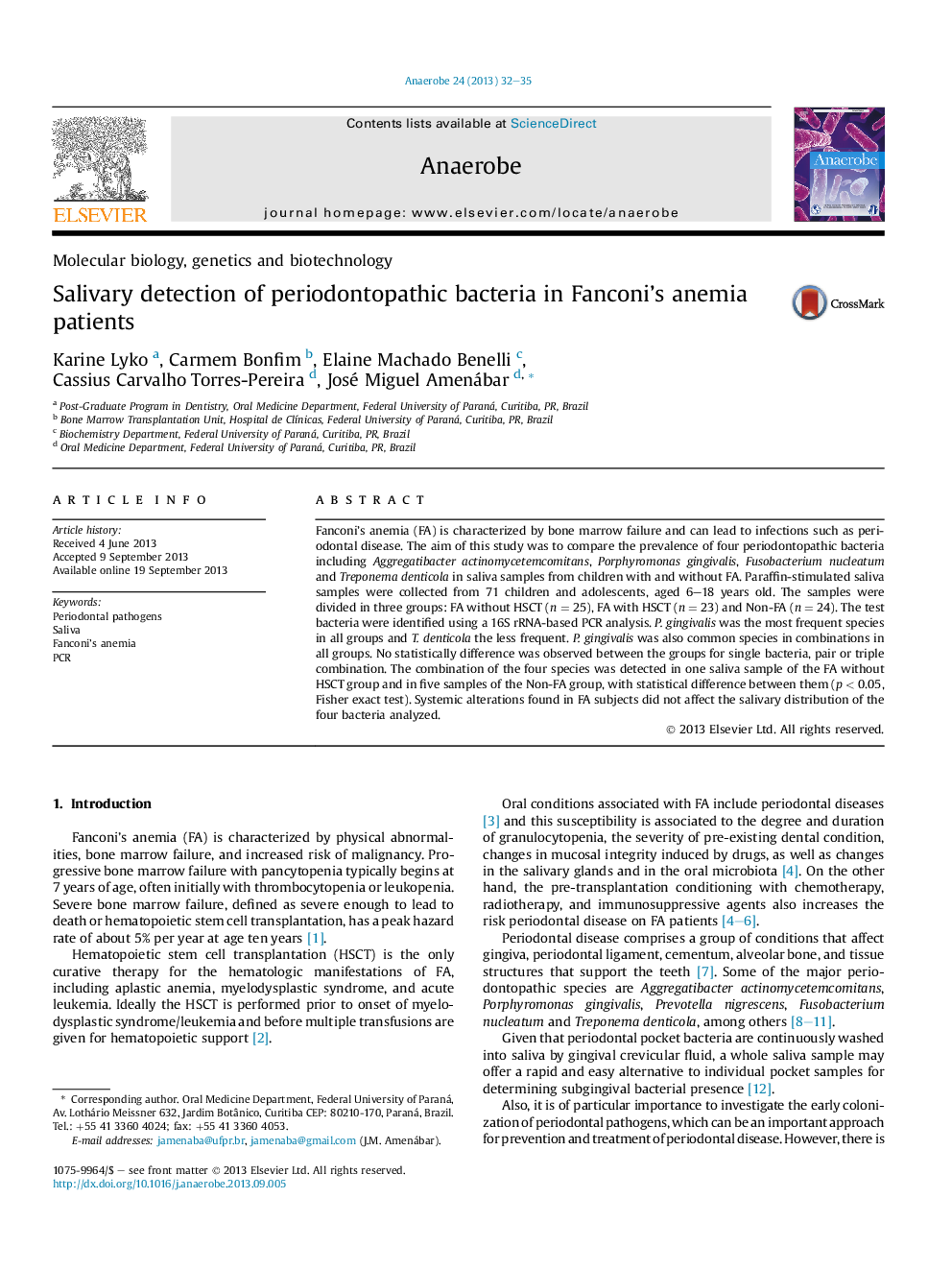| Article ID | Journal | Published Year | Pages | File Type |
|---|---|---|---|---|
| 3395165 | Anaerobe | 2013 | 4 Pages |
•Fanconi's anemia is characterized by bone marrow failure and can lead to infections such as periodontal disease.•First study to examine prevalence of salivary periodontal pathogens in subjects with Fanconi's anemia.•Porphyromonas gingivalis showed a high prevalence in all groups.•Systemic alterations found in FA subjects did not affect the salivary distribution of the four bacteria analyzed.
Fanconi's anemia (FA) is characterized by bone marrow failure and can lead to infections such as periodontal disease. The aim of this study was to compare the prevalence of four periodontopathic bacteria including Aggregatibacter actinomycetemcomitans, Porphyromonas gingivalis, Fusobacterium nucleatum and Treponema denticola in saliva samples from children with and without FA. Paraffin-stimulated saliva samples were collected from 71 children and adolescents, aged 6–18 years old. The samples were divided in three groups: FA without HSCT (n = 25), FA with HSCT (n = 23) and Non-FA (n = 24). The test bacteria were identified using a 16S rRNA-based PCR analysis. P. gingivalis was the most frequent species in all groups and T. denticola the less frequent. P. gingivalis was also common species in combinations in all groups. No statistically difference was observed between the groups for single bacteria, pair or triple combination. The combination of the four species was detected in one saliva sample of the FA without HSCT group and in five samples of the Non-FA group, with statistical difference between them (p < 0.05, Fisher exact test). Systemic alterations found in FA subjects did not affect the salivary distribution of the four bacteria analyzed.
